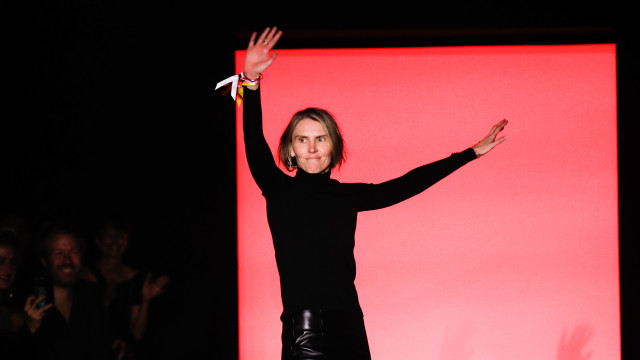One of the cornerstones of Gabriela Hearst's design when she introduced her own business in 2015 was her unwavering dedication to sustainability. A wake-up call from her past led her to make this decision. The fashion designer acquired Santa Isabel, her family's 17,000-acre property in Paysandú, Uruguay, after her father passed away in 2011.
Hearst was reminded upon returning to her isolated childhood home how her family made their own furniture and blankets, using valuable resources from the ranch to create long-lasting pieces—a sharp contrast to the wasteful methods of the fashion industry, where she had spent more than ten years working.
"I became aware of the difference between my activities in Uruguay and my responsibilities in New York," she explained in an interview with Time. "I became really concerned about climate change at that point."
Hearst has contributed to the industry's redefining in the nine years since she established her label, arguing that the purest form of luxury is understanding the origins of clothing materials and the people who produce them. Her creations, which emphasize streamlined lines, deft tailoring, and fine craftsmanship, have become wardrobe essentials for the sophisticated lady.
She has followers like Greta Thunberg, Jill Biden, and Angelina Jolie, who wore one of her outfits to the 2020 presidential inauguration. She led Gabriela Hearst and, from 2020 to 2023, was the creative director of Chloé, a French luxury fashion label that she assisted in becoming the first in Europe to be certified as a B Corp. Even though Hearst's notoriety has grown, her goal of making exquisite clothes with care and inspiring people to take up the battle against climate change has not changed.
"I have to bring consciousness to the product because they have a desire for beauty," she explains. "Climate-related disasters are a constant on the planet; you cannot ignore them. It is real, it is occurring, and everyone will have to pay a price.
Every stage of Hearst's design process presents a chance to uphold its commitment to climate change. She gives leftover Turkish rugs and bits of cashmere new life, repurposing them into vibrant overcoats and angular blazers.
There is a waiting list for her handbags—not because she wants them to be exclusive, but rather because she creates them to order or in small batches, which reduces waste. She declared that her company would no longer use plastic for both front of house and back of house in 2019 and created the first runway show to be carbon neutral. Also, she has a refreshing lack of worry for getting her clients to make larger purchases. "I'm thrilled that my clients have only discovered one excellent sweater," she exclaims. That's the mindset I was raised with growing up on a farm: if it's good quality, it will last for years. Therefore, our goal was to create a product that was both elegantly designed and ageless, made to the greatest standards possible using the finest materials available.
However, Hearst has more in mind than just clothes for a more sustainable future. Her Chloé Spring/Summer '23 collection is devoted to the clean energy solution, demonstrating her ardent support for the development of nuclear fusion. She thinks that the more artistic element of her brand is just as important as her activism. She states, "Your value system is your legacy." We are aware that our brand will be among the most recognizable in the future. Since I am aware of the bigger picture, I am prepared to invest the necessary time and effort. I am very aware of our destination. /BGNES

